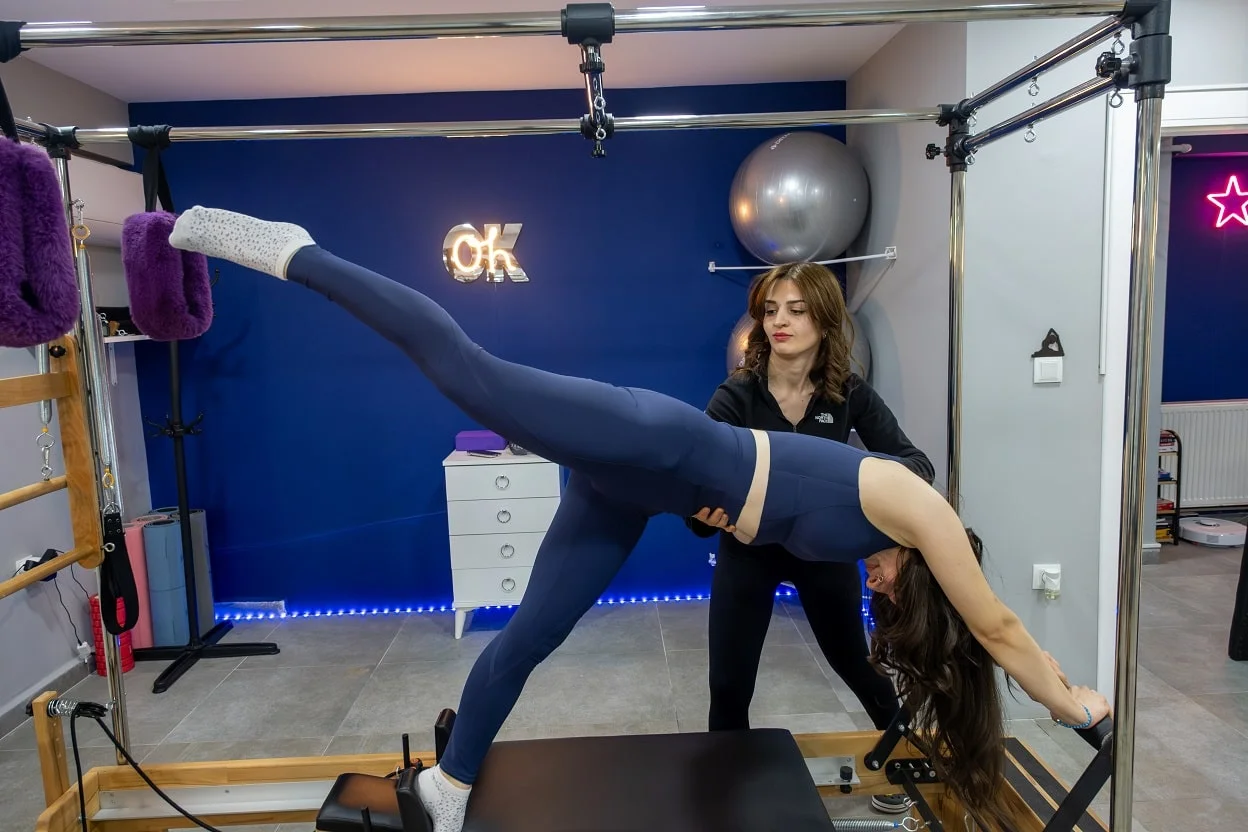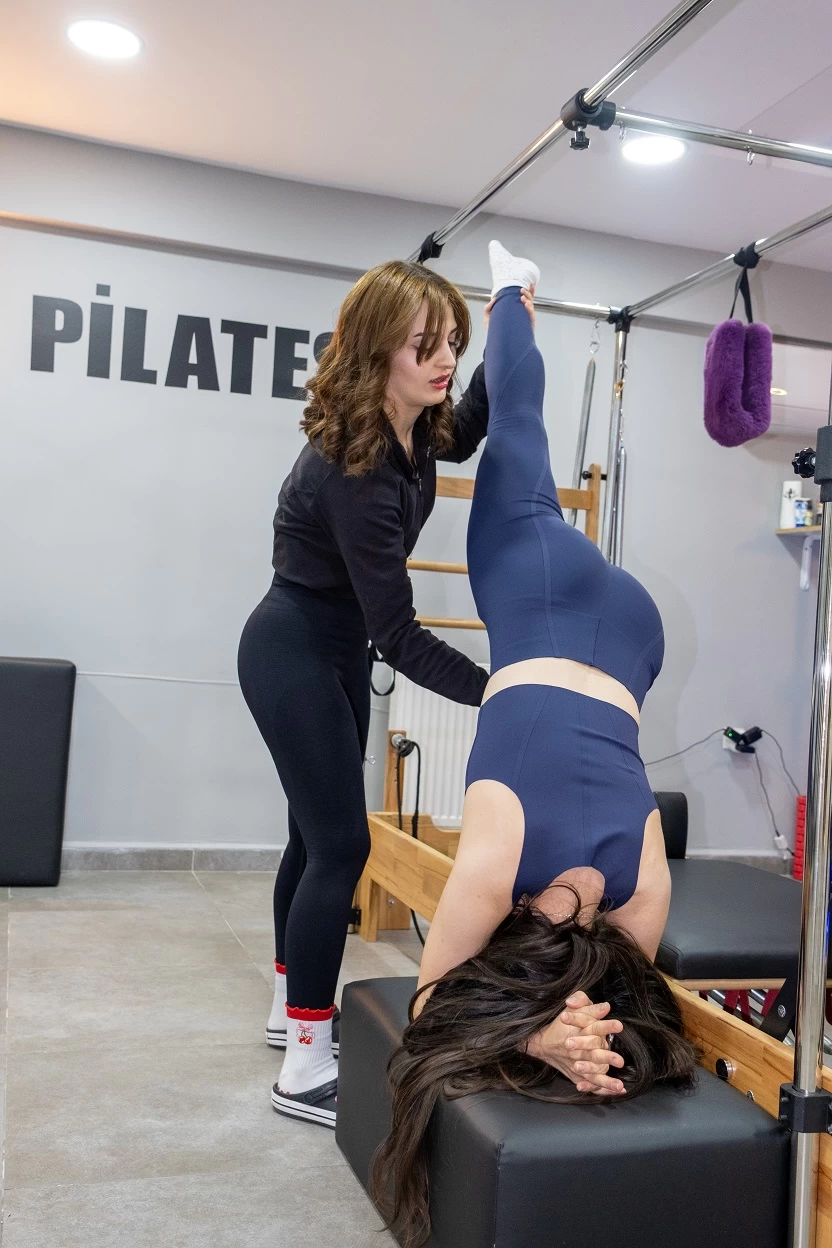
Physiotherapy and Pilates: A Powerful Duo for a Healthier Body
- Physiotherapy and Pilates: A Powerful Duo for a Healthier Body
- What Is Physiotherapy?
- What Is Pilates?
- The Connection Between Physiotherapy and Pilates
- Final Thoughts
Hello, I’m Physiotherapist Neslihan Aydemir. In this article, I’d like to share how physiotherapy and Pilates complement each other perfectly. Both physiotherapy and Pilates are highly effective in preserving physical health, managing pain, and correcting muscular imbalances. Although they differ in approach and application, their ultimate goal aligns—promoting a healthier, more balanced body.
In this article, I’ll explore what physiotherapy and Pilates are, how they relate to one another, and the specific benefits each offers.
What Is Physiotherapy?
Physiotherapy is a healthcare discipline focused on improving and restoring physical function, particularly in systems such as the musculoskeletal, nervous, and respiratory systems. The main objectives of physiotherapy are to reduce pain, enhance movement capacity, correct postural imbalances, address muscular and joint dysfunctions, increase muscle strength, and support faster rehabilitation after injuries or surgeries.
Common physiotherapy methods include:
- Manual therapy
- Therapeutic exercises
- Hot and cold treatments
- Electrotherapy
- Postural and movement education
What Is Pilates?
Pilates is an exercise system developed by Joseph Pilates in the early 20th century. It focuses on improving flexibility, balance, core strength, posture, and overall body awareness. The practice emphasizes controlled and mindful movements, with a particular focus on the core muscles that support the spine.
Pilates is generally performed in two formats:
- Mat Pilates: Uses bodyweight and small props.
- Reformer Pilates: Uses a specialized machine with resistance springs.
Although Pilates is often practiced in group settings, its underlying purpose—training the body in correct movement patterns—makes it very similar to the goals of physiotherapy.

The Connection Between Physiotherapy and Pilates
Understanding the relationship between physiotherapy and Pilates is key. When performed with correct techniques, Pilates can significantly contribute to the goals of physiotherapy. Combining both approaches allows us to enhance the body’s natural balance mechanisms and improve overall mobility and function.
Benefits of Combining Physiotherapy with Pilates:
- Supports Spinal Health
Helps relieve back and neck pain, improves posture, and supports proper spinal alignment. It is particularly beneficial in cases like scoliosis, lordosis, and kyphosis. - Improves Muscle Strength and Flexibility
Reduces muscular imbalances and promotes body symmetry. - Strengthens Core Muscles
Activates abdominal, back, and pelvic floor muscles to provide better structural support—especially helpful after surgeries or in conditions like herniated discs. - Enhances Balance and Coordination
Strengthens the neuromuscular connection, improving motor control and reducing fall risks, especially in elderly individuals. - Supports Joint Health
Increases joint range of motion and reduces joint load. It can help alleviate symptoms in conditions such as osteoarthritis. - Improves Respiratory Function
Through proper diaphragm usage and breathing control, Pilates enhances lung capacity and can support individuals with respiratory conditions. - Accelerates Rehabilitation
An effective complementary method in recovery from sports injuries, post-surgical rehabilitation, and musculoskeletal disorders.
In many cases, integrating physiotherapy and Pilates can speed up recovery and produce more sustainable results.
However, individuals with any health condition should consult a physiotherapist or physician before beginning a Pilates program.
Final Thoughts
A healthy body is no coincidence—it requires conscious, balanced, and sustainable effort. Physiotherapy and Pilates are two foundational pillars of this journey. One heals, the other strengthens. One alleviates pain, the other prepares the body for the future. When used together, they not only treat existing issues but also increase resilience against future injuries.
Still, it’s crucial to remember: Incorrectly performed exercises can do more harm than good. Engaging in movements that are not tailored to one’s condition may increase the risk of injury. This is why people with physical concerns should always perform Pilates under the guidance of a physiotherapist and with a personalized plan.
Investing in your body is investing in your life. Better posture, less pain, more freedom of movement, and a higher quality of life are all within your reach.
By combining physiotherapy and Pilates, you can enjoy not only a healthier present but also a vibrant and active future. For anyone seeking long-term physical well-being, this is not a luxury—it’s a necessity.

Physiotherapist Neslihan Aydemir

